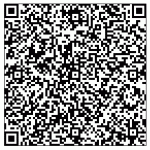انواع سوال در ریدینگ آیلتس | IELTS Reading Question Types

در آزمون آیلتس شما با سه مدل سوال در قسمت ریدینگ مواجه می شوید:
نوع اول : Not given / False / True
نوع دوم : Summary
نوع سوم :Matching
در متن زیر هر سه مدل سوال آورده شده است ، سعی کنید با دقت پاسخ سوال ها را بدهید:
هدف دوم ما از طرح متن زیر آموزش لغات آکادمیک می باشد. این لغات در متن بصورت “Bold” نمایش داده شده اند.
این مجموعه شامل ۳۲ سوال می باشد.
The History of Bicycles
A
The bicycle was not invented by one individual or in one country. It took nearly 100 years and many individuals for the modern bicycle to be born. By the end of those I00 years, bicycles had revolutionized the way people traveled from place to place.
B
Bicycles first appeared in Scotland in the early 1800s, and were called velocipedes. These early bicycles had two wheels, but they had no pedals. The rider sat on a pillow and walked his feet along the ground to move his velocipede forward.
C
Soon a French inventor added pedals to the front wheel. Instead of walking their vehicles, riders used their feet to turn the pedals. However, pedaling was hard because velocipedes were very heavy. The framework was made of solid steel tubes and the wooden wheels were covered with steel. Even so, velocipedes were popular among rich young men, who raced them in Paris parks.
D
Because velocipedes were so hard to ride, no one thought about using them for transportation. People didn’t ride velocipedes to the market or to their jobs. Instead, people thought velocipedes were just toys.
E
Around 1870, American manufacturers saw that velocipedes were very popular overseas. They began building velocipedes, too, but with one difference. They made the frameworks from hollow steel tubes. This alteration made velocipedes much lighter, but riders still had to work hard to pedal just a short distance. In addition, roads were bumpy so steering was difficult. In fact, most riders preferred indoor tracks where they could rent a velocipede for a small fee and take riding lessons.
F
Subsequent changes by British engineers altered the wheels to make pedaling more efficient. They saw that when a rider turned the pedals once, the front wheel turned once. If the front wheel was small, the bicycle traveled just a small distance with each turn. They reasoned that if the front wheel were larger, the bicycle would travel a greater distance. So they designed a bicycle with a giant front wheel. They made the rear wheel small. Its primary purpose was to help the rider balance. Balancing was hard because the rider had to sit high above the giant front wheel in order to reach the pedals. This meant he was in danger of falling off the bicycle and injuring himself if he lost his balance. Despite this inherent danger, “high wheelers” became very popular in England.
G
American manufacturers once again tried to design a better bicycle. Their goal was to make a safer bicycle. They substituted a small wheel for the giant front wheel and put the driving mechanism in a larger rear wheel. It would be impossible for a rider to pedal the rear wheel, so engineers designed a system of foot levers. By pressing first the right one and then the left, the rider moved a long metal bar up and down. This bar turned the rear axle. This axle turned the rear wheel and the bicycle moved forward. Because the new safety bicycle minimized the dangers inherent in bicycle riding, more and more people began using bicycles in their daily activities.
H
The British altered the design one last time. They made the two wheels equal in size and created a mechanism that uses a chain to turn the rear wheel. With this final change, the modern bicycle was born.
I
Subsequent improvements, such as brakes, rubber tires, and lights were added to make bicycles more comfortable to ride. By 1900, bicycle riding had become very popular with men and women of all ages. Bicycles revolutionized the way people traveled. Today, millions of people Worldwide ride bicycles for transportation, enjoyment, sport, and exercise.
انواع سوالات در ریدینگ آیلتس IELTS Reading
نوع سوال روبرو از نوع “Matching” می باشد. در این نوع سوال می بایست تشخیص دهید که مفهوم کلی پاراگراف A تا I به کدام گزینه ۱ تا ۱۰ مربوط می شود.
Part 1:
READING passage 1: questions 1 to 8
Reading passage 1 has nine paragraphs, A-I
Choose the correct heading for paragraphs B-I from the list of headings below
Write the correct number i-x for the questions 1-8
i The birth of the modern bicycle
ii velocipedes nothing more than entertainment
iii The final adjustments, worldwide popularity
iv The first bicycle and how it worked
v Alterations to enhance pedaling
vi Popularity of the “high wheeler” in England
vii Reducing the weight of the framework
viii The addition of pedals
ix How American manufacturers improved the safety of bicycle
x An introduction to the history of bicycles
Example answer
Paragraph A x
۱- Paragraph B
۲- Paragraph C
۳- Paragraph D
۴- Paragraph E
۵- Paragraph F
۶- Paragraph G
۷- Paragraph H
۸- Paragraph I
این سوال از نوع “True / False / Not Given” می باشد. شما می بایست تشخیص دهید که سوال طبق متن درست است ، مخالف متن است ، یا با مفهوم جمله متن ارتباطی ندارد.
Part 2:
Questions 9 to 17
Mark each statement as (True) , (False) or Not Given according to the information in Reading 1.
TRUE if the statement agrees with the information
FALSE if the statement contradicts the information
NOT GIVEN if there is no information on this
…… . ۹٫ Many individuals took part in creating the modern bicycle.
…… . ۱۰٫ The first bicycle revolutionized travel in Scotland and overseas.
………. ۱۱٫ Early velocipedes had frameworks made of solid steel tubes.
……….۱۲٫ A French inventor made a lot of money by adding pedals to the front wheel
……….۱۳٫ People in Paris paid a fee to ride velocipedes to their jobs.
……….۱۴٫ American manufacturers substituted hollow steel tubes for the solid tubes.
………. ۱۵٫ Many Americans rode their velocipedes on the indoor tracks because it was cheap.
………..۱۶٫ The primary purpose of the giant front Wheel was to help the rider balance.
………. ۱۷٫ Although “high wheelers” were naturally dangerous to ride, many people in England liked them.
در این نوع سوال بر اساس متن جا های خالی را پر کنید. این سوال از نوع “Summary” می باشد.
Part 3:
Questions 18 to 26
Complete the summary of paragraph G below
Choose no more than three words from paragraph G for each answer
American manufacturers made another effort to 18 ………………an improved bicycle. Their aim was to make a 19 …………………. They replaced 20…………………… with a 21……………………… and placed the driving mechanism in a bigger rear wheel. A set of 22……………………… was designed by engineers, because a rider would not be able to pedal the rear wheel. By pushing the right and then the left one, the riders could move up and down a 23…………………… This bar revolved the back 24…………………… The rear wheel was turned by this axel and the bicycle moved forward. Due to the fact that the new safety bicycle significantly reduced the natural 25……………………… in riding bicycles, the utilization of bicycle in the 26…………………… of people started to grow day by day.
نوع سوال روبرو از نوع “Matching” می باشد. در این نوع سوال می بایست تشخیص دهید کدام دسته A تا D مربوط به کدام سوال می باشد.
Part 4:
Questions 27 to 32
Match the descriptions with the people.
For each description 27 to 32 write the correct letter A to C, you may use a letter more than once.
A – French inventor
B – American manufacturers
C – British engineers
D – Rich young men
۲۷- Reduced the weight of the bicycle
۲۸- Added pedals to the early velocipedes
۲۹- Raced velocipedes in Paris parks
۳۰- Equalized the wheels in size and added a chain
۳۱- Designed a safer bicycle and made bicycle more popular
۳۲- Designed a large front wheel for the bicycle
تهیه شده توسط : استاد هوشنگ نژاد
نمونه سوال لیستنینگ آیلتس IELTS Listening
پاسخ سوال ها
Part 1 (Matching) :
۱- paragraph B : iv
۲- paragraph C: viii
۳- paragraph D: ii
۴- paragraph E: vii
۵- paragraph F: v
۶- paragraph G: ix
۷- paragraph H: i
۸- paragraph I: iii
Part 2 (True/False/Not Given) :
۹٫ true 10. false 11. true 12. Not given ۱۳٫ false 14. true 15.not given 16. False 17.True
Part 3 (summary completion) :
۱۸- design
۱۹- safer bicycle
۲۰- giant front wheel
۲۱- small wheel
۲۲- foot levers
۲۳- long metal bar
۲۴- axle
۲۵-dangers
۲۶- daily activities
Part 4 (Matching) :
۲۷: b, 28-a , 29-d, 30-c, 31-b, 32-c







۳ دیدگاه